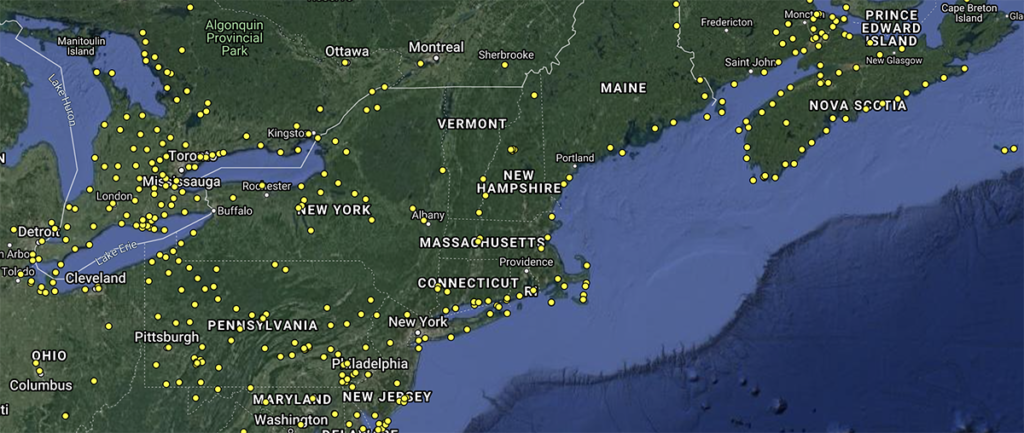Tracking migratory birds is getting much easier, thanks to the expansion of a continent-wide network of antennas that automatically receive signals from radio-tagged birds. This network, called the MOTUS network, enables scientists to use much lighter transmitters called nanotags, and study the movements of birds that are too small for older transmitter technology.
By tracking birds during migration, MOTUS data can answer a host of questions about bird biology and conservation—like where birds face the highest mortality, which habitats they rely on most during migration, and what determines whether they successfully reproduce.
These are some of the questions Mass Audubon is trying to answer for migratory American Kestrels, which weigh only 4 ounces and are too small to carry most tracking tags. Kestrels have declined steeply across the state even as habitat loss has slowed, leaving apparently good-quality habitat unoccupied. Beginning in 2021, Mass Audubon will track Massachusetts-breeding kestrels with nanotags (or similar LifeTags) to see what happens to these birds on migration.

How MOTUS Nanotags Work
All nanotags give off bursts of signal on the same frequency, so any MOTUS antenna can detect any tag. To differentiate one tagged bird from another, each tag has a “signature” with different burst lengths, pauses, and spacing—almost like Morse code. When a tagged bird flies within about 9 miles of an antenna, the antenna picks up its signature and records the bird’s position on a connected computer.
Older tracking technology presented many challenges for studying small birds. Tags that transmit GPS data to a satellite are too heavy for most small birds, and there’s still no clear way to make them smaller. Plus, such satellite transmitters are very expensive. For many years, the only tags small and light enough to use on most small birds were less accurate, and required the recapture of any tagged individual in order to download stored location data.
Building a Nationwide Network of Receivers
MOTUS antennas are an improvement over older technologies, but only in areas where there are enough of them to detect birds as they pass through. Now, the focus is on creating rows, or “fencelines,” of evenly-spaced antennas to intercept birds as they pass by on migration.

One of these rows of antennae crosses Pennsylvania and parts of New York State, and soon, there’ll be additional MOTUS “fencelines” across inland areas of New England. Mass Audubon has proposed placing antennae at some of our sanctuaries, although coordinators of the New England MOTUS Collaborative will ultimately determine which sites make the most sense in terms of monitoring migrating animals.

